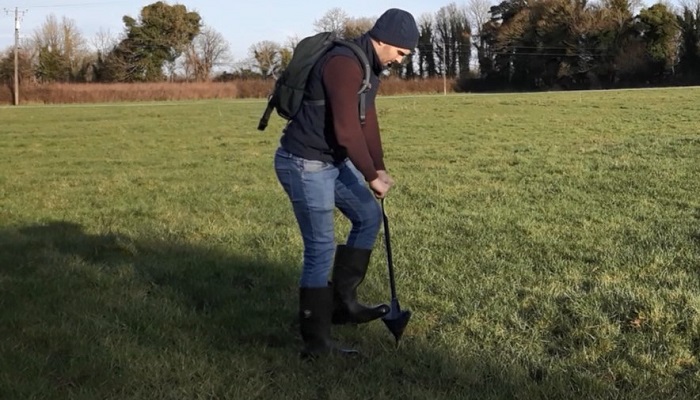02 March 2021
Soil sampling – Money well spent

Now is the ideal time of the year to take soil samples on your farm if you have not done so in the recent past as it will provide vital information on the soil fertility status of your farm. Ciaran Beatty, Teagasc Advisor, Castlerea, advises not to delay in having soil samples taken
Many farmers in the past have expressed disappointment with yields from fertilisers which were used on their lands. Was it the right fertiliser to use? Are we just putting out the same type of fertiliser each year because we always did it that way?
A correctly taken soil sample will cut out the guessing game and bring real accurate information to the table. Grass is the cheapest source of feed on our farms today with it being up to 3 times cheaper than silage and up to 5 times cheaper than concentrates.
On any farm, grass supply and grazing season is dependent on location, weather, stocking rate but most importantly the fertility status of the soil on your farm. The more grass you can grow and utilise, the more efficient and cost effective your enterprise can become.
Tips on taking a sample
- Soil sample every 2 – 4 hectares
- Take sample to the correct depth of 10cms with appropriate corer
- Leave 3 – 6 months between sampling and last application of chemical fertilisers or slurry/fym
- Avoid unused spots such as old fences, ditches, drinking troughs, dung or urine patches, areas where feeders were etc.
- Take a representative sample by walking in a “W” shaped pattern across the field
- Place cores in sample box, well filled and mark location on map and send for analysis.
Fertiliser Plan
The resultant soil analysis report will provide us with vital information on soil PH (lime level) along with Phosphorus (P) and Potassium (K) levels. We can then target each area with the appropriate and correct fertiliser as well as pinpointing where exactly our slurries can have the best effect.
Lime
Lime is hugely important in that it is the cement in the mix of NPK that makes them available to promote plant growth and can also unlock stored nutrients in the soil. Lime has to be right or you are just wasting money. This indeed is the first step for many farmers in that they will apply lime based on soil results to try to improve the PH of the soil thus improving the effectiveness of the fertiliser being applied.
Soil samples cost €25 per standard sample and I believe them to be an investment and not a cost and I would recommend that you contact your local Teagasc office to get them taken.
More information
For lots more information on soil sampling, the soil index system and interpreting your soil samples results, click on the link here: Soil Sampling
There are also two excellent videos to watch below
1. Five steps to taking a soil sample by Edward Egan and Tara Heaney Teagasc Co. Meath article here
2. Soil Sampling by Mark Plunkett, Soil & Nutrition Specialist with Teagasc on why it’s so important to test your soil and the best way to do it.
Find more information on Soil & Soil Fertility here
